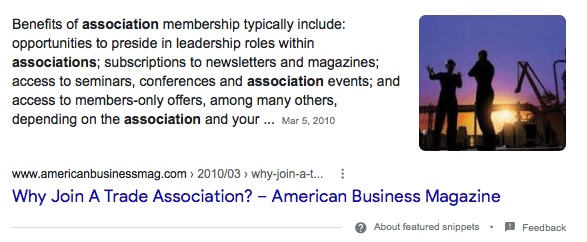 The term “thought leadership” tends to be used loosely these days to describe any content that has to do with an industry, regardless if it has any real value to the reader or not. In truth, With so much online noise fighting for your member’s attention, your association must step up and provide quality content that benefits and provides real value to your audience.
The term “thought leadership” tends to be used loosely these days to describe any content that has to do with an industry, regardless if it has any real value to the reader or not. In truth, With so much online noise fighting for your member’s attention, your association must step up and provide quality content that benefits and provides real value to your audience.
What is Thought Leadership Content?
Thought leadership is not necessarily just a type of content, but a type of content marketing. According to Marketing Insider Group, this type of content marketing involves tapping into the experience and knowledge of your industry or business to answer the biggest questions on the minds of your audience on a particular topic. When it comes to thought leadership, your audience is usually looking for the best answer to a question.
In order to provide the best answers to your members, you need to be an expert on the topics you are discussing. As an association, you may have contacts in your network that can help with this; or you can take it upon yourself to do thorough research to develop content that has accurate and detailed information to ensure that you establish credibility and protect your reputation. Often members will look to the association for answers or support; and having this type of content available not only helps them, but also shows potential members that you truly understand the industry you represent.
How to Create Valuable Thought Leadership Content
Thought leadership content can come in many forms, and be distributed across many mediums. Blogs, essays, videos, presentations, webinars, research studies and any other form of media that can provide your members and potential members with useful, enlightening, and valuable information are considered thought leadership content pieces. This content is commonly available for free or in exchange for a registration of a name, email, and other contact information.
One of the key aspects to thought leadership content is that it is not a membership sales pitch. While critical to audience engagement, it should be kept enlightening, interesting, and informational. Your call to action at the end of the piece can be your pitch for your readers to take actions such as signing up for your newsletter.
A recent study by Edelman and LinkedIn shows there is an oversaturation of “thought leadership” content online. This makes it essential to come up with content that stands out from the rest. This can include original research and insights by your association with information that pertains specifically to your industry.
Whether you create content in-house or outsource for it, be sure to create, upload, and share content across channels including your website, e-newsletter and social media accounts.
Why is Thought Leader Content Important?
In this day and age, standing out by creating original content that resonates and solidifies your association as a trusted thought leader in your space is important. According to an article from Association’s Now, successful thought leadership content can raise your association’s platform. The recent Edelman and LinkedIn study showed 64 percent of the respondents say that thought leadership is used when deciding to trust an organization’s capabilities.
Having strong thought leadership content goes a long way in increasing awareness, bringing leads, establishing relationships, providing value, and recruiting new members to your association. It also drives SEO and your online visibility, making it more likely your association’s content appears first to people who are looking for information related to your industry. Doing your own research and creating original and high-quality thought leadership content will go a long way in securing your association as the overall thought leader for your members and potential members.
For help with your Association’s content marketing efforts or for more information, visit our website at www.arc3communications.com or contact us at info@arc3communications.com.
 According to Google Health Vice President, Dr. David Feinberg, MD an estimated 7 percent of Google’s
According to Google Health Vice President, Dr. David Feinberg, MD an estimated 7 percent of Google’s
 TydenBrooks
TydenBrooks










